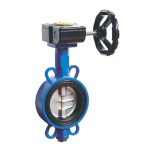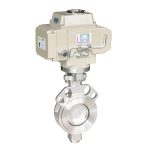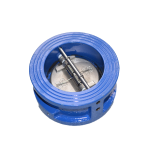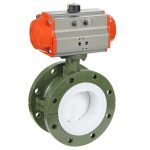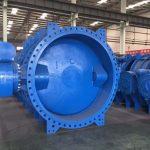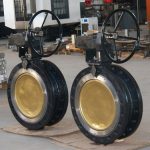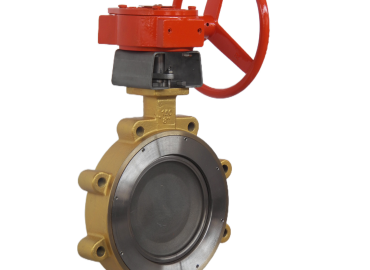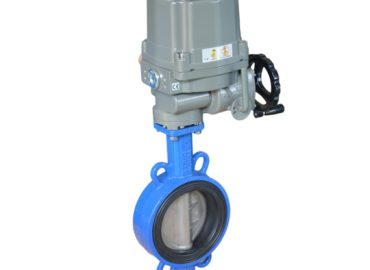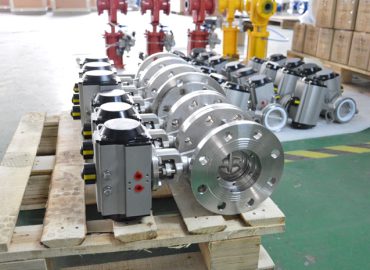Pneumatic butterfly valve are one of the most widely used control valves in many industrial, manufacturing, and process control applications. These valves offer a range of advantages compared to manual valve alternatives, such as increased accuracy and reliability. There are various types of actuated butterfly valves that cater to the demands of different applications, such as manual, electric, or pneumatic models. It is important to carefully consider which type is best suited for your specific application in order to ensure optimal performance.
Introduction
An actuated butterfly valve is a type of flow-control technology that can be used in both industrial and commercial applications. It is an inline, quarter-turn valve that uses a circular disc with two semi-circular blades to regulate flow inside pipelines. As the name suggests, it typically requires an external actuation system (such as manual, electric, or pneumatic) to open and close the valve. These valves offer numerous advantages compared to manual valves – they are more durable due to fewer moving parts, offer improved accuracy and consistency, require minimal maintenance and can be used in applications that demand higher pressure or temperature ratings. Additionally, they are also a cost-effective option and provide quicker response times compared to manual valves.
Types of actuated butterfly valve – manual, electric, pneumatic
Actuated butterfly valves come in a variety of types, offering distinct advantages and disadvantages for different applications. The most common type is the manual valve, which requires manual operation for opening and closing. Electric actuated butterfly valve offer automated operation with increased accuracy and reliability when compared to manual valves. Pneumatic actuated butterfly valve use air pressure rather than electricity to operate the valve, while electric/pneumatic hybrid models can be used in certain applications that require both capabilities. Depending on the complexity of your application, some actuated butterfly valves may also offer various features such as variable speed control or adjustable gap requirements.
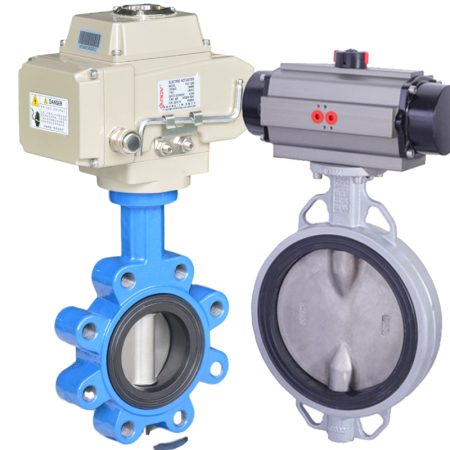
Applications best suited to actuated butterfly valves
Actuated butterfly valves can be used in a wide variety of applications, from simple water-flow control to complex production systems. They are especially well-suited for high-temperature or intense pressure environments and provide excellent regulation of flow rate, ensuring accuracy and consistency. Common applications include the regulation of fluid in air conditioning systems, water heater lines, fire sprinkler systems and chemical processing. Other ideas include using them as part of a railway signaling system or industrial gas/vapor control. This type of valve is also suitable for controlling the speed of both liquids and gases in medical equipment, making it an ideal choice for many diverse industries.
Automation systems
Automation systems are becoming increasingly popular in many industries as they allow for automated processes, meaning that businesses can get more work done with fewer resources. These systems can be used to automate a variety of tasks, including data entry, inventory management, and production line operations. By using automation systems, businesses can reduce the costs associated with manual labour while simultaneously increasing productivity. Furthermore, automation systems help to improve accuracy and lower the risk of human error by eliminating the need for manual labour. Automation systems are also capable of making decisions based on predetermined parameters, meaning that they can respond quickly when faced with unexpected situations.
HVAC control systems
HVAC control systems are designed to provide automated control of heating, ventilation, and air conditioning (HVAC) systems. These systems are designed to precisely regulate the temperature in an environment and can be used for residential, commercial, or industrial settings. By using sensors to monitor the environment, HVAC control systems can accurately adjust temperatures to the desired levels. Additionally, these systems can also be used to regulate humidity levels and filter out pollutants from the air. HVAC control systems are becoming increasingly popular, as they help users save energy and money by ensuring efficient use of power usage.
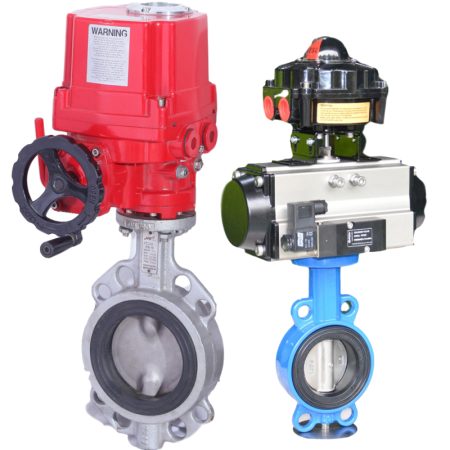
Process control systems
Process control systems are an essential part of many industries, as they are used to monitor and control the flow of materials and processes within a production line. These systems can be used to detect changes in a production process and adjust settings accordingly, thus improving accuracy and efficiency. Additionally, process control systems can be used to monitor equipment utilization, detect anomalies or malfunctions, and generate real-time reports for analysis. By using these systems, businesses can reduce the risk of human error while ensuring that operations are carried out safely and economically.
Wellhead control systems
Wellhead control systems are used to monitor and manage production from oil and gas wells. They allow operators to accurately control the pressure in the well, regulate the flow of fluids, and shut off wells if needed. By using wellhead control systems, operators can maximize their production potential while ensuring the safety of workers and equipment. The systems can also be used to detect leaks or malfunctions in the system and provide real-time data for further analysis. In summary, wellhead control systems help oil and gas producers maximize their production potential while ensuring worker safety at all times.
Waste water treatment plants
Waste water treatment plants are essential for keeping the environment and our ecosystems healthy. They perform a number of functions, such as removing pollutants from the water and creating safe drinking water. The process begins with incoming water entering the plant, which is then screened to remove debris like leaves and branches. After this step, the water is further treated with chemicals that are used to break down organic materials before being filtered again for any remaining particles. The final stage of the process is disinfection, where the cleaned water is passed through ultraviolet lights or chlorine to eliminate any remaining pathogens. By treating waste water in this way, we can produce clean drinking water while at the same time preventing pollution from entering our rivers, lakes and oceans.
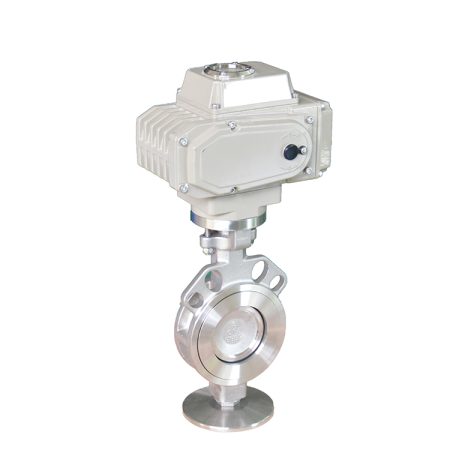
Benefits of using actuated butterfly valves in these applications
Actuated butterfly valves are becoming increasingly popular in a number of industries and applications, especially the water treatment sector. These valves are designed to be highly reliable, efficient and durable, withstanding high pressure levels when used correctly. The main benefit of butterfly valves over other types of valves is their ability to open and close quickly and accurately in response to changing conditions. This makes them ideal for controlling the flow rate or direction of liquids in pipelines. In addition, they can be used to regulate temperature and pressure as well as providing an effective blockage in the event of a sudden surge or other dangerous situations. Their ease of installation makes them suitable for many industrial processes too. All these features make actuated butterfly valves a great choice for many different applications.
Conclusion
In conclusion, actuated butterfly valves are a popular choice for many different industries and applications, due to their reliability, efficiency and long-term durability. From controlling the flow rates and directions of liquids in pipelines to regulating temperature and pressure as well as effectively blocking sudden surges or other dangerous situations, these valves offer a wide range of benefits that make them ideal for use in many industrial processes. As such, they are best suited for applications such as water treatment plants, manufacturing processes, boiler systems and power stations. Ultimately, butterfly valve offer the reliability, efficiency and cost-effectiveness that makes them highly recommended in a variety of industries.




